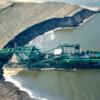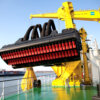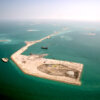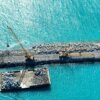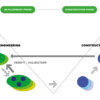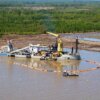Preliminary planning and design is rightfully a broad term in order to cover the range of activities to be considered during the planning and design phase.
Socio-economic questions for the planning and design phase
Some of the basic elements of this phase are illustrated by the following questions:
- Is the project consistent with national policies and objectives?
- On the basis of total infrastructure needs, does it make good investment sense?
- Will the project further the national, regional and local socio-economic interests?
- Is the planning horizon sufficiently long both in hindsight data as well as future use projections?
- Does it incorporate the latest state-of-the-art in terms of equipment, procedures and throughput taking into account the ability to compete for scarce capital resources?
- Does it consider alternatives and include an analysis of trade-offs and cost and benefits for each of the alternatives?
- Does it adequately address the short-, medium- and long-term environmental consequences?
- Are data available from previous dredging works, whether capital, deepening and widening of channels and/or maintenance dredging?
Dredging and engineering aspects
Focusing on the dredging and engineering aspects, consideration should be given to the following:
Do adequate data exist relating to bathymetry, morphology, hydrodynamics, geology, meteorology and geography of the potential development sites? If not, these data sets are essential to evaluate the following: potential design scenarios; proper specifications for the works; good construction estimates; maximum use of natural forces both for construction and maintenance, such as scouring currents; impacts of salt water intrusion; alternative uses of dredged material; and finally, the subsequent maintenance requirements and costs.
- Does there exist what is often called, a List of Requirements? Such a list is a quantified assessment of all functions and parts of the project.
- Does there exist an adequate engineering staff to collect and analyse existing data, or adequately direct the collection and analysis of such engineering data; or, should consultants be employed? If consultants are to be employed, on which elements should they be used? Often it is advantageous to select a consultant at the beginning who has the capabilities and expertise to carry on through the various phases. This avoids the costs of the repetitive learning curve to bring new consultants on board for each phase.
- Does the plan consider the use or relocation of dredged material during construction and subsequent maintenance? Were sufficient options considered to minimise transportation costs for the dredged material and to consider the potential impacts of weather, sea state, and other elements on the construction and maintenance processes?
- In many cases today, a risk analysis or probabilistic analysis is conducted on the project. Using a technique such as a factor tree, the analysis will study which elements or facts result in the highest risk for the project. When the high-risk elements have been determined, the greatest study effort is directed to these factors or elements.
Importance of data collection
These are rather basic factors, but often the site investigation and data needs, between the planning or feasibility process and the design and construction process, are misunderstood. In many cases, two separate data sets are required. The latter and more detailed is that in the design phase, where such data are essential, to adequately specify the works in such a manner as to avoid unnecessary risk to the owner and to the contractors. There are many instances where preliminary site investigation data were inappropriately extrapolated into designs and specifications with costly and unsatisfactory results.
Once the project feasibility has been determined from the planning phase, a preliminary design is often the next step. It further focuses the development of the project on the most effective engineering, environmentally responsible and economic alternative, and avoids some of the pain of overlooking any critical engineering elements.


